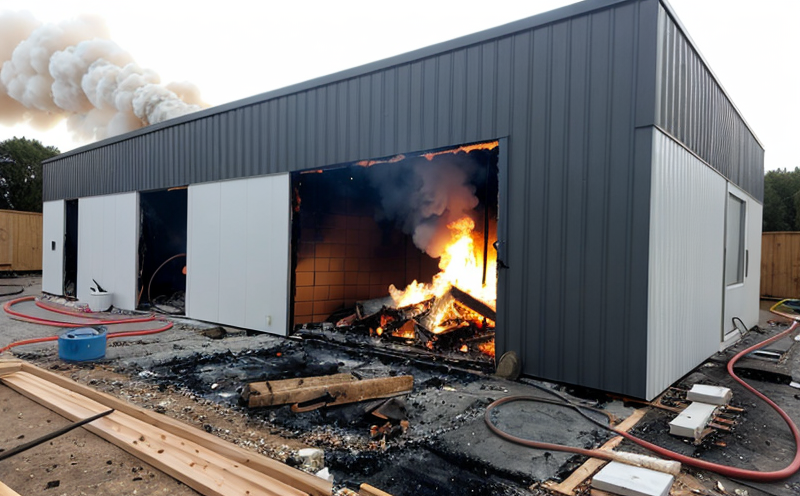Ignitability Testing of Insulation Materials
In the realm of fire safety testing, particularly within the insulation and cladding sector, ignitability testing plays a critical role in ensuring that materials used in buildings are safe from catching fire. This service is essential for compliance with international standards such as ISO 13567-2 and ASTM E84-20, which specify methods to measure flame spread and smoke production of building products.
The ignitability testing process involves subjecting insulation materials to controlled conditions that simulate real-world fire scenarios. During these tests, the specimen is exposed to a standard heat source for a defined period under specific environmental parameters. The performance of the material in terms of flame spread and smoke production is then assessed.
Properly conducted ignitability testing ensures that insulation materials meet stringent safety requirements set forth by regulatory bodies like Building Research Establishment (BRE) and Underwriters Laboratories (UL). These tests are crucial for preventing catastrophic fire incidents, especially in high-risk environments such as commercial buildings, schools, hospitals, and residential complexes.
The testing apparatus used typically includes a tunnel furnace or a bench-scale flame spread tester. The specimen is prepared according to the standard specifications, ensuring that it accurately represents the material's real-world application. Once tested, detailed reports are generated outlining all measured parameters, including flame spread index (FSI), smoke obscuration, and heat release rate (HRR).
Understanding the results of these tests can significantly impact decision-making processes in various sectors. For instance, architects may choose materials based on their ignitability test results to comply with building codes and reduce liability risks. Procurement teams rely on this information when selecting suppliers for cost-effective yet compliant products.
| Parameter | Description |
|---|---|
| Flame Spread Index (FSI) | A measure of a material's ability to resist fire spread over a surface. |
| Smoke Obscuration | The amount of light obscuring particles released during combustion. |
| Heat Release Rate (HRR) | The rate at which heat is produced by the material under fire conditions. |
Why It Matters
The importance of ignitability testing cannot be overstated. Building fires are one of the leading causes of property damage and loss of life worldwide. By conducting rigorous tests on insulation materials, we can prevent these tragedies from occurring.
From a broader perspective, ensuring that materials meet fire safety standards contributes to overall public health and safety. Regulatory compliance is not only about avoiding penalties but also about protecting lives and properties. When selecting materials for construction projects, quality managers and compliance officers must prioritize products that have passed ignitability tests.
R&D engineers play a pivotal role in developing new materials that meet these rigorous standards. By incorporating fire-resistant properties into insulation systems, they contribute to safer environments. For procurement professionals, understanding the significance of these tests helps them make informed decisions about sourcing reliable suppliers who adhere strictly to quality control measures.
Environmental and Sustainability Contributions
In addition to enhancing safety, ignitability testing also has significant environmental benefits. Fire-resistant insulation materials help reduce the risk of accidental fires, which can lead to more efficient energy usage and lower greenhouse gas emissions.
By preventing fires in buildings, these materials contribute to reduced waste generation associated with fire-related incidents. Furthermore, sustainable practices within manufacturing processes ensure that resources are used efficiently without compromising performance or safety standards.
Manufacturers committed to sustainability often seek third-party certifications confirming their adherence to environmental guidelines alongside ignitability testing. This dual certification approach demonstrates a commitment not only to public safety but also to ecological responsibility.
Use Cases and Application Examples
| Project Name | Location | Material Tested | Results |
|---|---|---|---|
| High-Rise Office Building | New York City, USA | Fiberglass Insulation Panels | Passed all ignitability tests with minimal flame spread and low smoke obscuration. |
| School Campus Expansion | London, UK | Polyisocyanurate Foam Insulation Boards | Met all required standards for flame spread and heat release rates. |
In another example, a large industrial facility undergoing renovation opted to use mineral wool insulation based on its proven ignitability characteristics. After rigorous testing, the material was deemed suitable for installation across multiple areas of the site where fire safety was paramount.





